A brush cutter is an essential tool for both professional landscapers and homeowners looking to maintain their outdoor spaces. Maintaining the sharpness of your brush cutter blade is crucial for efficient and effective cutting.
A dull blade not only makes your work more difficult but can also damage your machine and compromise the quality of your cuts. We will guide you through the step-by-step process of How To Sharpen A Brush Cutter Blade, ensuring that it remains in top condition for your gardening or landscaping needs.
We will cover the necessary tools and equipment, safety precautions, and techniques to achieve a sharp and durable blade, resulting in a smoother and cleaner cutting experience. So, let’s dive in and discover the best practices for sharpening your brush cutter blade with ease and precision.
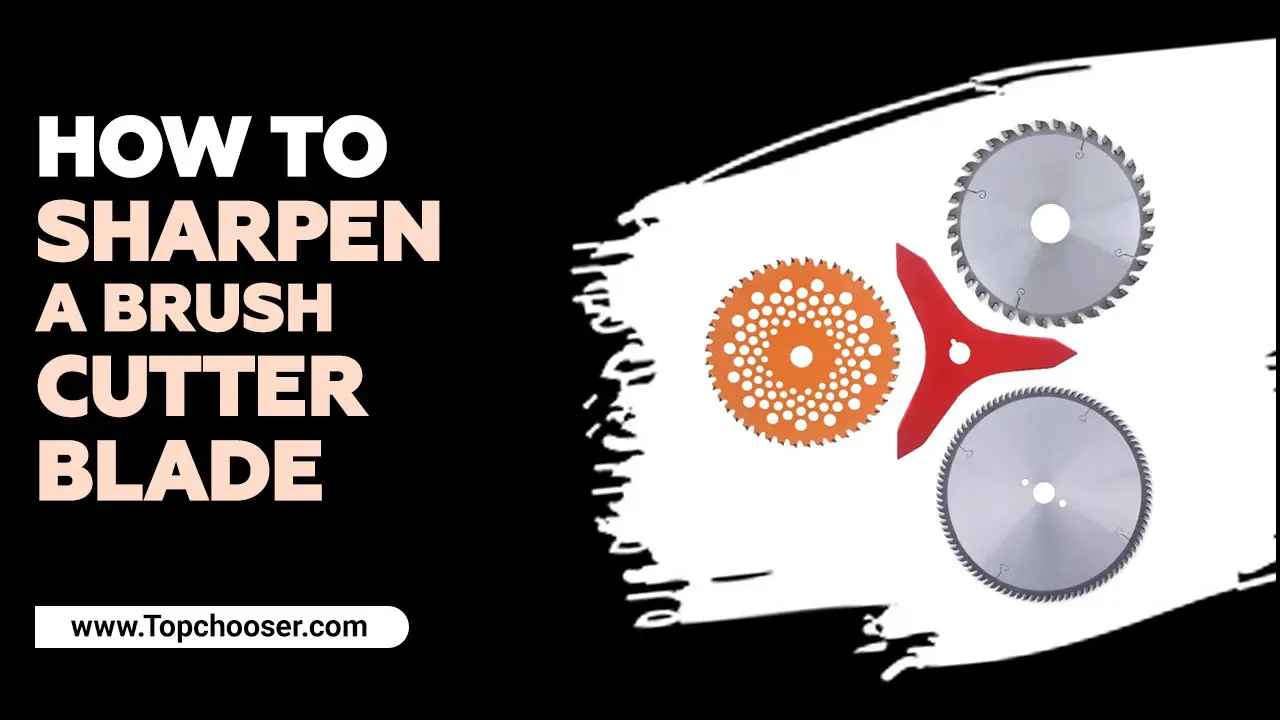
Signs That Your Brush Cutter Blade Needs Sharpening
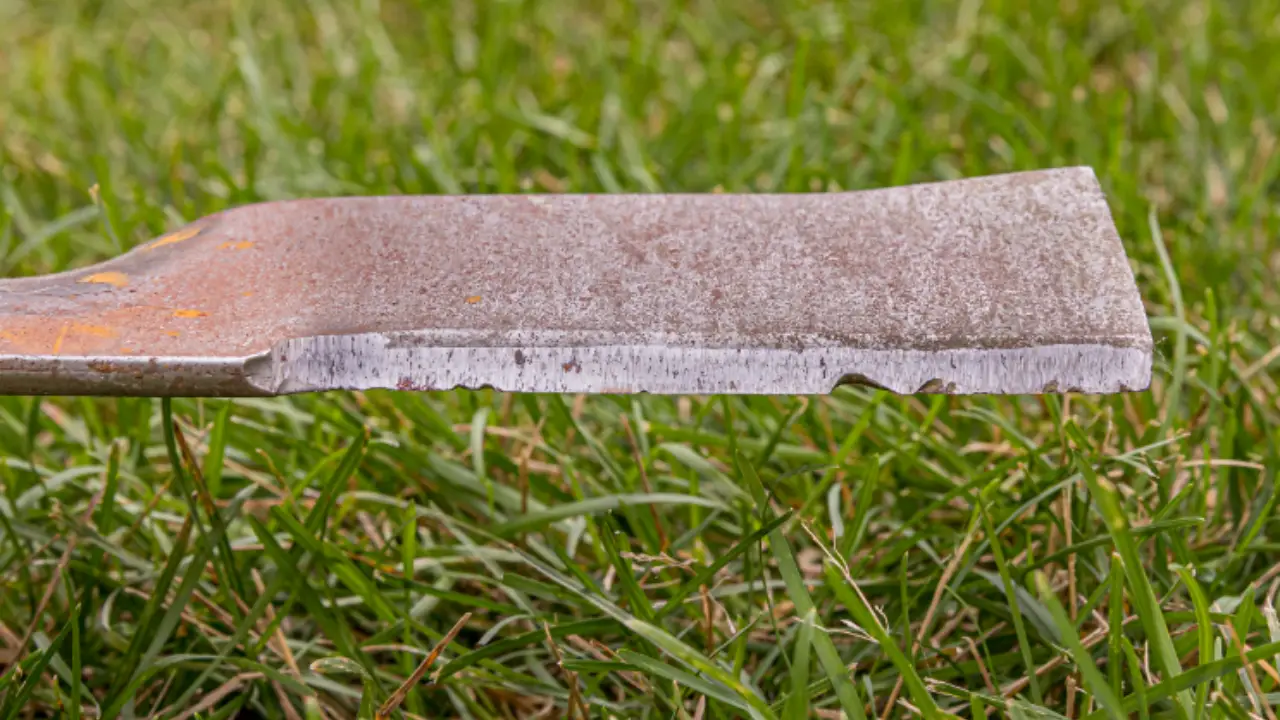
Knowing the signs that your brush cutter blade needs sharpening is of utmost importance for several reasons. A sharp blade is essential for optimal performance and efficiency. A dull blade not only slows down the cutting process but can also lead to uneven and ragged cuts, which can negatively impact the overall appearance of the area being maintained.
- Reduced Cutting Efficiency: If you notice that your brush cutter is struggling to cut through vegetation or requires multiple passes to achieve the desired results, it may be a sign that the blade needs sharpening.
- Uneven Cutting: A dulled brush cutter blade may result in an uneven cutting pattern, leaving behind patches of untrimmed vegetation or an untidy appearance.
- Increased Effort Required: If you find yourself exerting more force or pushing harder to cut through vegetation, it could indicate that the blade is no longer sharp enough.
- Excessive Vibration: A blade that needs sharpening may cause increased vibrations in the brush cutter, which can affect the overall performance and comfort during operation.
- Fraying Or Tearing Of Vegetation: A dull blade may cause the vegetation to fray or tear instead of cleanly cutting through, leading to a less professional-looking finish.
- Reduced Fuel Efficiency: A blade that is not sharp can put additional strain on the brush cutter’s engine, leading to increased fuel consumption and decreased operational efficiency.
- Visual inspection: Take a close look at the blade itself. If you notice visible signs of wear, chipping, or dullness, it is a clear indication that it needs sharpening.
Tools And Materials Needed For Sharpening A Brush Cutter Blade
- Safety goggles
- Work gloves
- Bench vice or sturdy work surface
- Flat file or grinding wheel
- Wire brush or steel wool
- Lubricating oil
- Rags or towels
- Brush cutter blade sharpening jig (optional)
How To Sharpen A Brush Cutter Blade In 7 Simple Tips
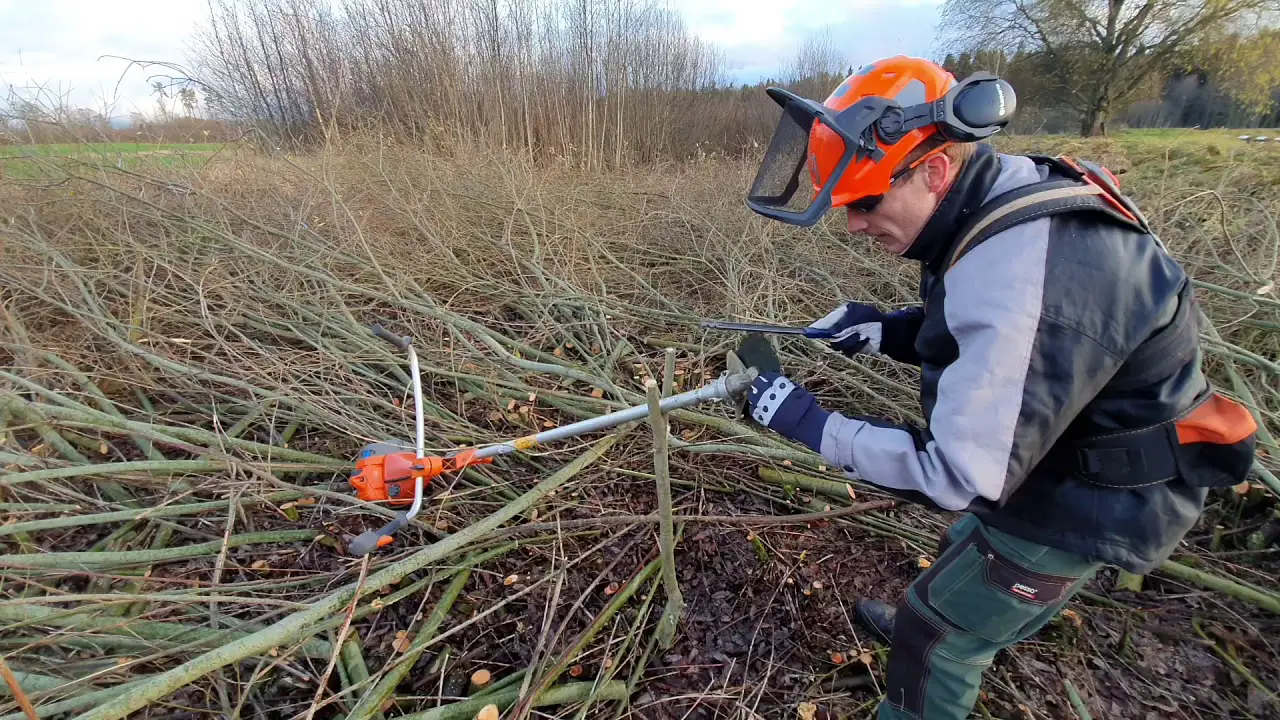
In any professional setting, it is crucial to possess the knowledge and skills required to maintain and sharpen tools effectively. When it comes to brush cutter blades, this principle holds. Understanding how to sharpen a brush cutter blade is of utmost importance in ensuring optimal performance, longevity, and safety.
A sharp brush cutter blade is essential for achieving clean and precise cuts. Dull blades not only compromise the quality of the work but also create a ragged and uneven appearance. By sharpening the blade regularly, professionals can uphold a high standard of efficiency and precision in their tasks. Below, we provide in-detailed guidelines to sharpen a brush cutter blade
1. Remove The Blade
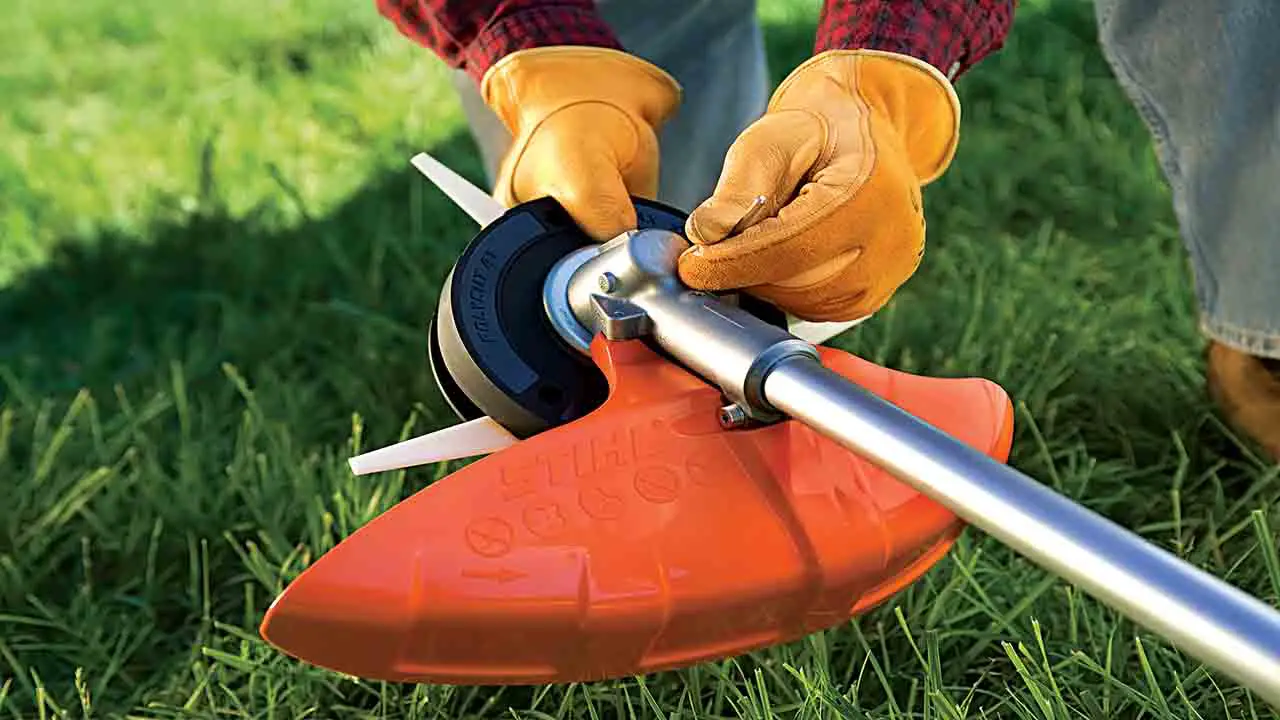
Regular sharpening is essential for maintaining the efficiency and longevity of a brush cutter blade. To ensure optimal cutting performance, it is crucial to remove the blade from the brush cutter before attempting to sharpen it. This process not only facilitates easy access to the blade but also eliminates the risk of accidental injuries.
To remove the blade, locate the blade nut or bolt that holds it in place. Using the appropriate tool, such as a wrench or socket set, carefully loosen and remove the nut or bolt. Once the fastening device is removed, gently slide the blade off the spindle or shaft, taking care not to damage any surrounding components.
2. Clean The Blade
After removing the blade from the brush cutter, the next step in sharpening it is to clean the blade. This is an important step because any debris or buildup on the blade can affect its performance and make it harder to sharpen. Start by using a brush or cloth to remove any grass clippings, dirt, or other debris from the blade.
You can also use a degreaser or soapy water to clean off any stubborn residue. Make sure to dry the blade thoroughly before moving on to the next step of sharpening. By taking the time to clean the blade, you can ensure that it is in optimal condition for sharpening and will be able to cut through vegetation with ease.
3. Choosing The Right Sharpener
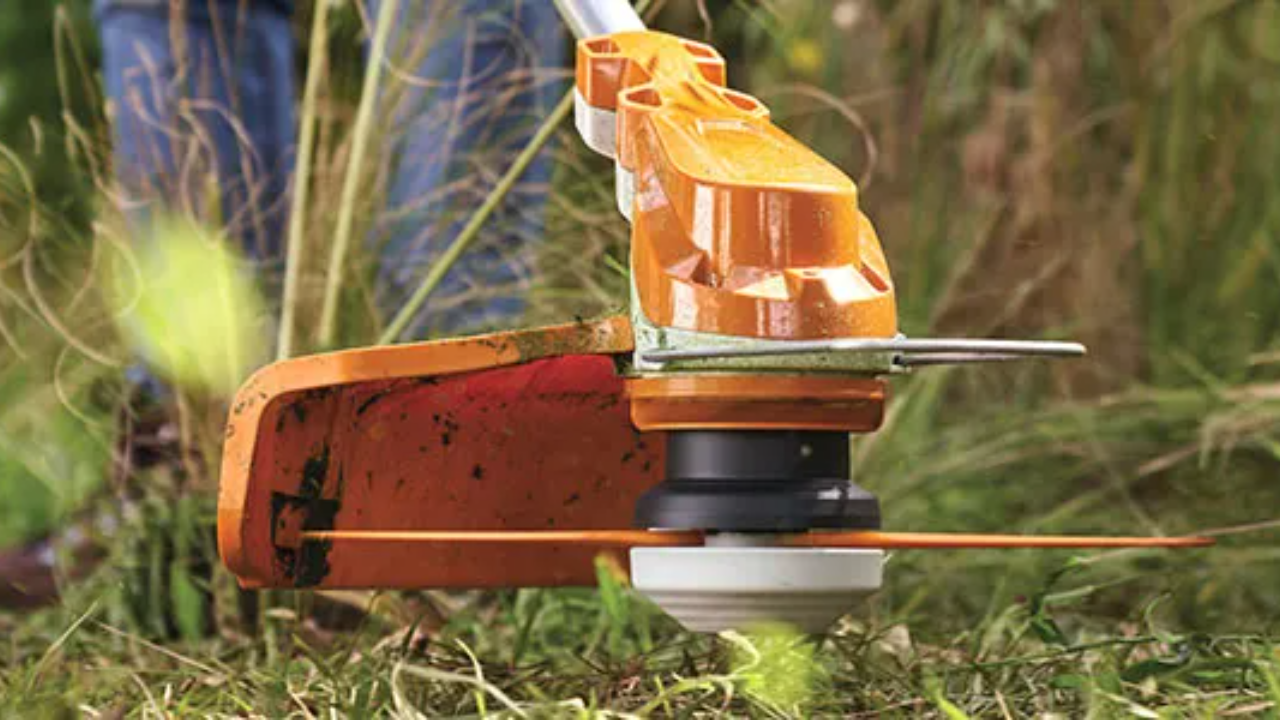
Before sharpening your brush cutter blade, you must choose the right sharpener. Various sharpeners are available on the market, each with its advantages and disadvantages. It’s important to choose the correct sharpener for the type of blade that you are using. In most cases, this will depend on the type of blade: stainless steel, hybrid steel, or carbon steel.
If you need help deciding which sharpener to buy, it’s best to consult an expert. They can help you determine the best for your needs and preferences. Once you have chosen the correct sharpener, follow the instructions that come with it to sharpen your brush cutter blade. Always use safety gear and keep sharpening safely from the work surface.
4. Aligned Properly Before You Begin
Before you begin the process of sharpening a brush cutter blade, it is crucial to ensure that the blade is aligned properly. Proper alignment not only ensures the safety of the operator but also maximizes the efficiency of the brush cutter. To align the blade, start by disconnecting the brush cutter from its power source and carefully inspecting the blade for any signs of damage or wear.
If there are any visible issues, it is essential to address them before proceeding. Once you have confirmed that the blade is in good condition, it is time to align it. Begin by placing the brush cutter on a stable surface and securing it firmly to prevent any movement during the alignment process.
5. Hold The Blade At A 90-Degree Angle
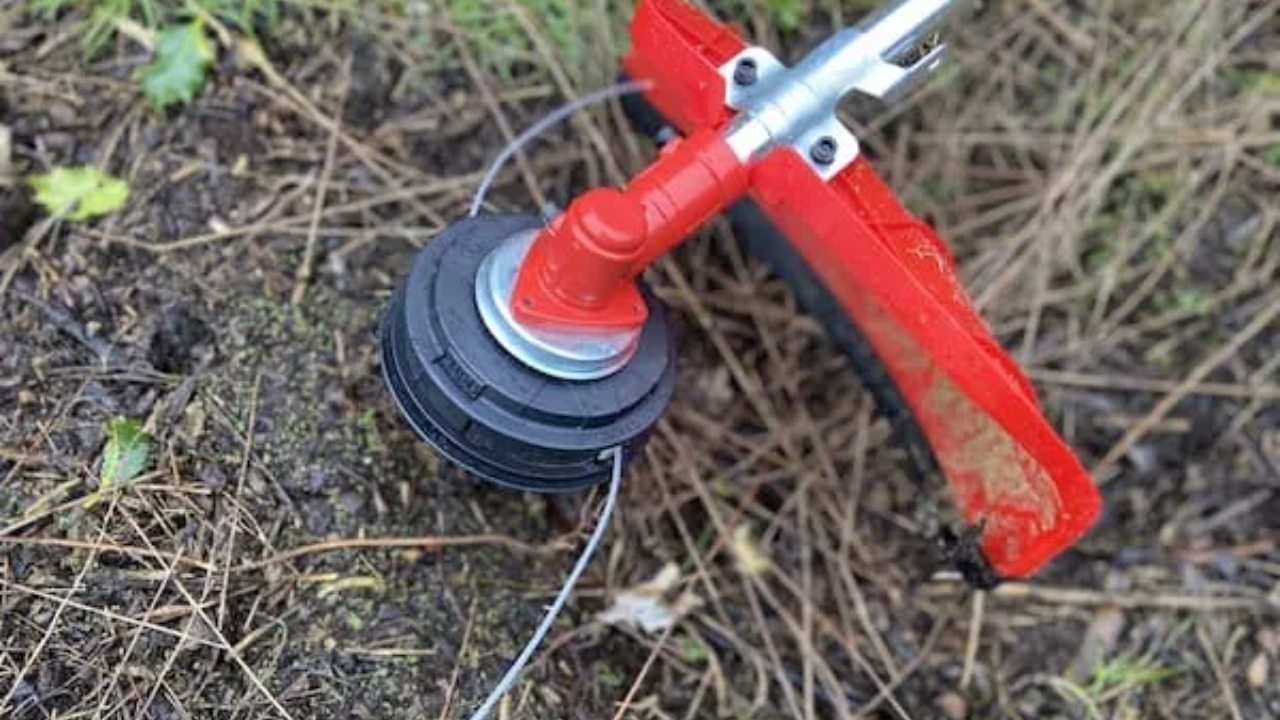
A dull blade can lead to inefficient cutting and increased strain on the machine, ultimately compromising its effectiveness. To sharpen a brush cutter blade effectively, one must follow a few simple yet crucial steps.
It is important to hold the blade at a 90-degree angle. This angle allows for optimal sharpening and ensures a precise cutting edge. It is advisable to use a sturdy workbench or vice to secure the blade firmly in place during the sharpening process. This will not only provide stability but also minimize the risk of accidents.
6. Use A Honing Rod To Sharpen The Edge Of The Blade
When sharpening a brush cutter blade, use a honing rod to keep the blade edge sharp. You can do this by using a steady and gentle hand while moving the honing rod in a circular motion over the blade. Sharpen the blade regularly to keep it in good condition and maximize its performance.
A honing rod makes for a hard, durable material that can withstand repeated sharpening and is suitable for this task. It is important to use gentle strokes when sharpening a brush cutter blade to avoid damaging it. Besides, using a honing rod to sharpen the blade will ensure it stays in good working condition for years.
7. Test For Sharpness
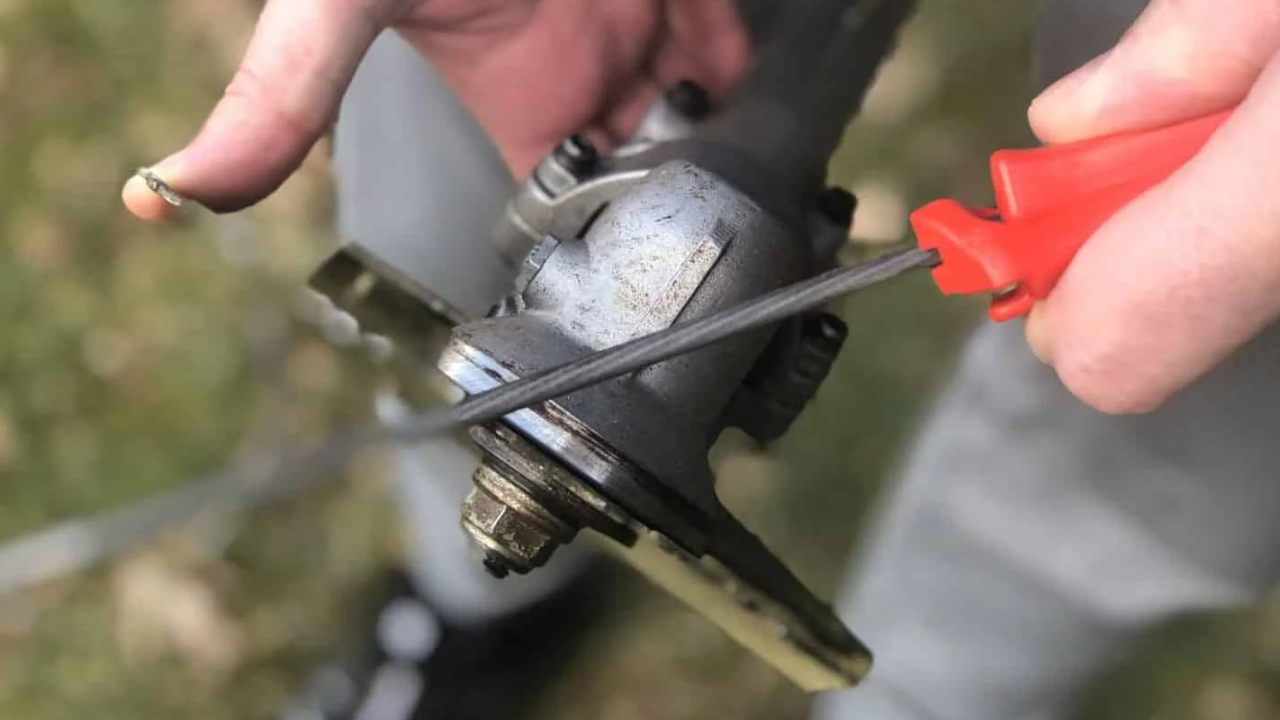
To test the sharpness of your brush cutter blade, there are a few simple steps you can follow. Firstly, ensure that the brush cutter is turned off and disconnected from any power source for safety reasons. Next, carefully inspect the blade for any signs of damage or wear. If the blade appears dull or has nicks and chips, it is time to sharpen it.
To sharpen the blade, you will need a file or sharpening tool specifically designed for brush cutter blades. Hold the blade securely and position the file at a 20-counter angle to the cutting edge. Using smooth and consistent strokes, move the file along the cutting edge of the blade, maintaining the same angle throughout.
8. Reinstall The Blade
To reinstall the blade, start by aligning the mounting hole on the brush cutter with the corresponding hole on the clearing blade. Carefully insert the bolt through the holes, ensuring that it goes all the way through. Next, screw on the nut tightly using a wrench or socket set, making sure it is securely fastened.
It is important to note that the blade should be properly balanced and aligned to avoid any vibrations or potential damage to the brush cutter. To achieve this, check that the blade is centred and level. If necessary, adjust the position of the blade by loosening the bolt slightly and repositioning it.
Safety While Sharpening A Brush Cutter Blade
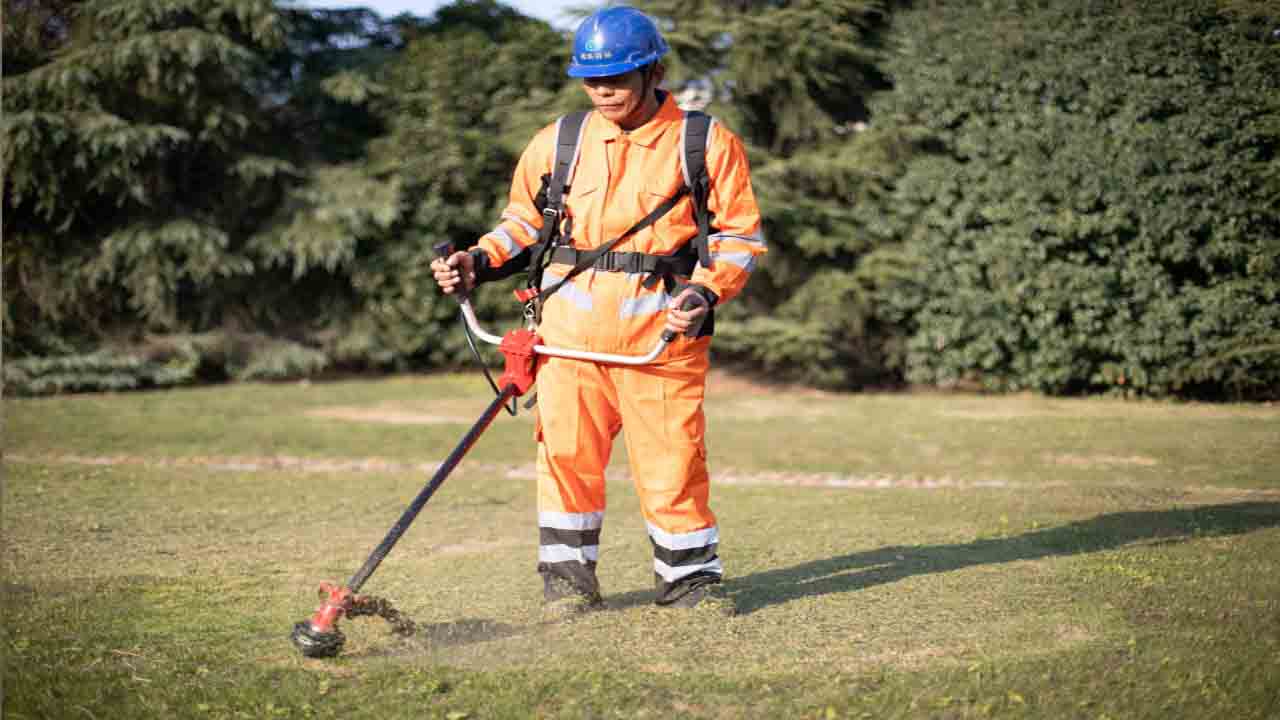
Before beginning to sharpen your brush cutter blade, be sure to read the instructions carefully and follow all safety precautions. Using a sharpening stone that is the correct size for your brush cutter blade will help you achieve a sharp angle on the blade.
Always hold the brush cutter firmly and apply moderate pressure when sharpening. However, it is crucial to prioritize safety while sharpening your blade. Here are some tips to keep in mind:
- Wear protective gear, including gloves and eye and ear protection.
- Ensure the brush cutter is turned off and disconnected from any power source before sharpening the blade.
- Use a vice or clamp to secure the blade while sharpening.
- Follow the manufacturer’s instructions and use the appropriate sharpening tool for your specific type of blade.
- Take breaks as needed to avoid fatigue or distraction, which can increase the risk of accidents.
This will ensure the blade stays straight and you don’t over-hone the edge. Additionally, it is important to keep the blade and sharpening stone clean to ensure good performance.
Common Mistakes To Avoid When Sharpening A Brush Cutter Blade
Knowing common mistakes to avoid when sharpening a brush cutter blade is crucial for maintaining the effectiveness and longevity of the tool. A brush cutter blade is a vital component of any professional landscaper or gardener’s arsenal, as it ensures the efficient cutting of dense vegetation.
- Using An Incorrect Sharpening Tool Or Method: Make sure to use the appropriate sharpening tool and technique specifically designed for brush cutter blades.
- Overheating The Blade: Avoid applying excessive pressure or spending too much time on one spot while sharpening, as it can cause the blade to overheat and lose its temper.
- Uneven Sharpening: Ensure that you maintain a consistent angle and apply equal pressure on both sides of the blade to achieve an even and balanced sharpening.
- Neglecting Blade Balance: After sharpening, check the blade’s balance by placing it on a balancing tool. If it tilts to one side, further adjustments are necessary to achieve proper balance.
- Not Wearing Protective Gear: Always wear appropriate safety gear, including gloves and eye protection, when sharpening a brush cutter blade to prevent injuries from sharp edges or flying debris.
- Skipping Blade Cleaning: Prior to sharpening, clean the blade thoroughly to remove any debris, dirt, or rust that may affect the sharpening process.
- Oversharpening: Do not overdo the sharpening process, as it can make the blade too thin, weaker, and prone to damage or breakage during use.
- Not Testing The Blade: After sharpening, test the blade’s performance on a small task to ensure its effectiveness and make any necessary adjustments if needed.
- Neglecting Regular Maintenance: Sharpening alone is not enough; maintain a regular schedule for cleaning, lubricating, and inspecting.
Tips For Maintaining A Sharp Brush Cutter Blade
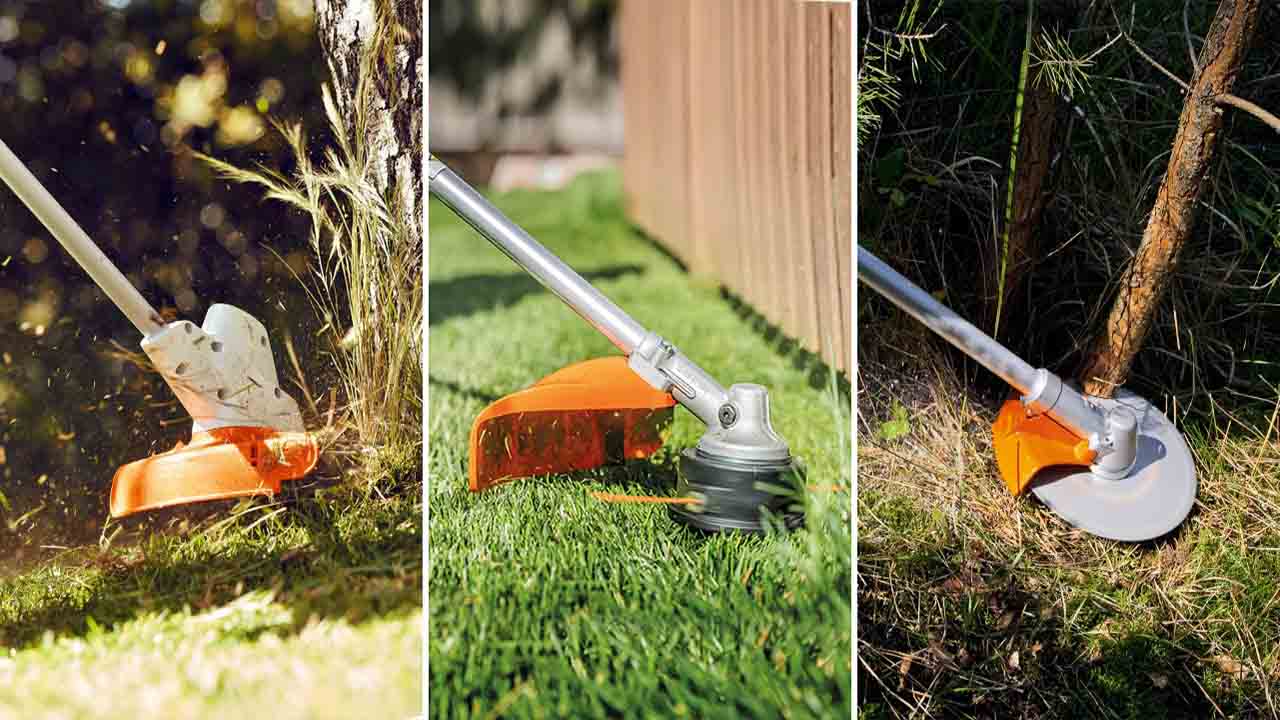
Knowing the importance of proper maintenance and understanding tips for maintaining a sharp brush cutter blade is crucial for anyone using this equipment. A sharp blade ensures efficient and effective cutting, reducing the time and effort required to complete tasks.
Regularly inspecting the blade for wear and tear is the first step in maintenance. By doing so, one can identify any damage or dullness that may affect the performance of the brush cutter.
- Regularly inspect the blade for any signs of damage or wear. Replace the blade if it is bent, cracked, or excessively worn.
- Clean the blade after each use to remove any builtup debris, such as grass blade weeds, or sap. Use a brush or compressed air to remove stubborn residue.
- Sharpen the blade regularly using a file or a grinding wheel. Follow the manufacturer’s instructions for the correct sharpening angle and technique.
- Check the blade’s balance by placing it on a balancing tool. If it tilts to one side, use a file to remove material from the heavier side until the blade is balanced.
- Lubricate the blade with a light oil or silicone spray to prevent rust and corrosion. Be sure to wipe off any excess oil before using the brush cutter.
- Store the blade in a clean, dry place when not in use to prevent moisture and rust. Consider using a blade cover or sheath for added protection.
- Avoid hitting hard objects, such as rocks or concrete, as this can cause the blade to dull or chip. Clear the cutting area of any potential hazards before starting the brush cutter.
- Use the brush cutter at the appropriate speed and RPM recommended by the manufacturer. Excessive speed or force can damage the blade and reduce its lifespan.
When To Replace Your Brush Cutter Blade Instead Of Sharpening It
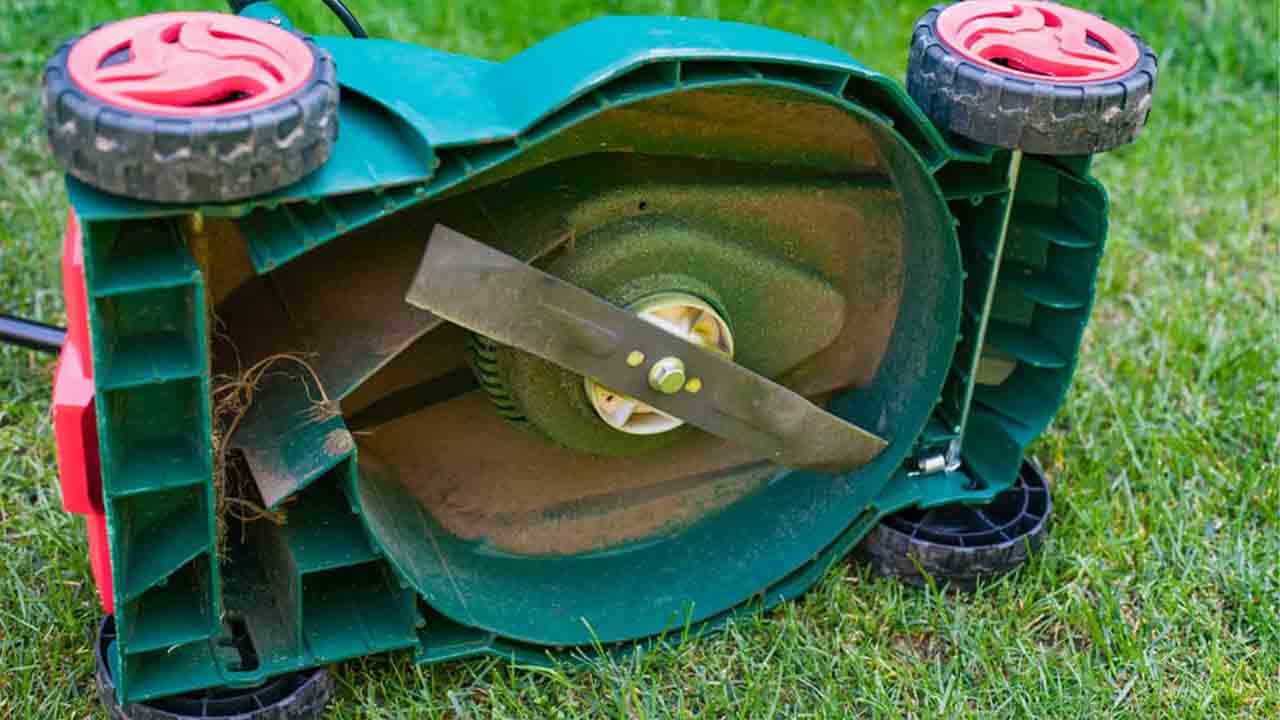
One key factor to consider is the condition of the blade’s cutting edges. If the edges are significantly worn down or damaged, sharpening may not be sufficient to restore the blade’s effectiveness. Blades that have been used extensively, resulting in a loss of their original shape or curvature, may also require replacement.
Another consideration is the level of blade wear. Over time, the cutting edges of the blade will naturally wear down due to regular use. However, if the wear reaches a point where the blade is significantly shorter than its original length, replacement is recommended. Blades that have been repeatedly sharpened to the point where they are much smaller than their original dimensions may also result in reduced cutting efficiency and should be replaced.
Conclusion
Sharpening a brush cutter blade is a necessary skill for any professional landscaper or gardener. Not only does a sharp blade make your work easier and more efficient, but it also ensures a clean and precise cut on any type of vegetation.
By following these steps on how to sharpen a brush cutter blade and using the appropriate tools and techniques, you can ensure that your brush cutter blade stays sharp and efficient for longer periods.
Remember always to handle the blade with caution and to inspect and maintain it regularly to prevent any accidents or damage. With the proper care and maintenance, your brush cutter will continue to be a valuable tool in your landscaping arsenal.
Frequently Asked Questions
[rank_math_rich_snippet id=”s-528ab1ee-b639-4e62-8b65-f8feb7d3a2cb”]

I am passionate about home engineering. I specialize in designing, installing, and maintaining heating, ventilation, and air conditioning systems. My goal is to help people stay comfortable in their homes all year long.
